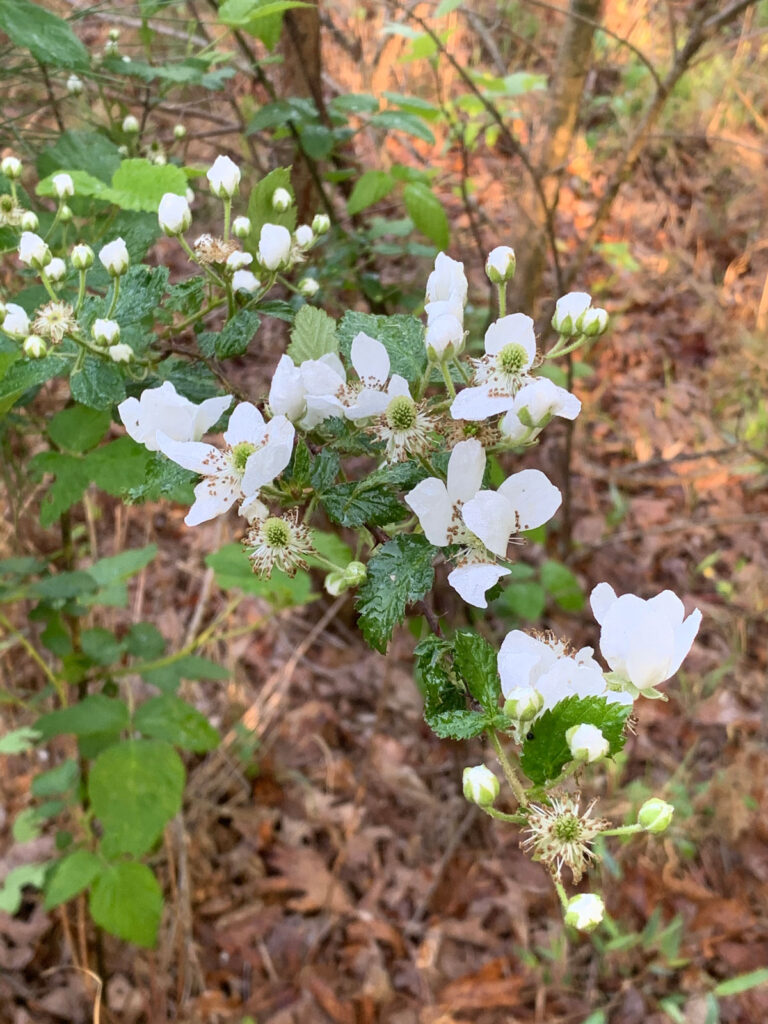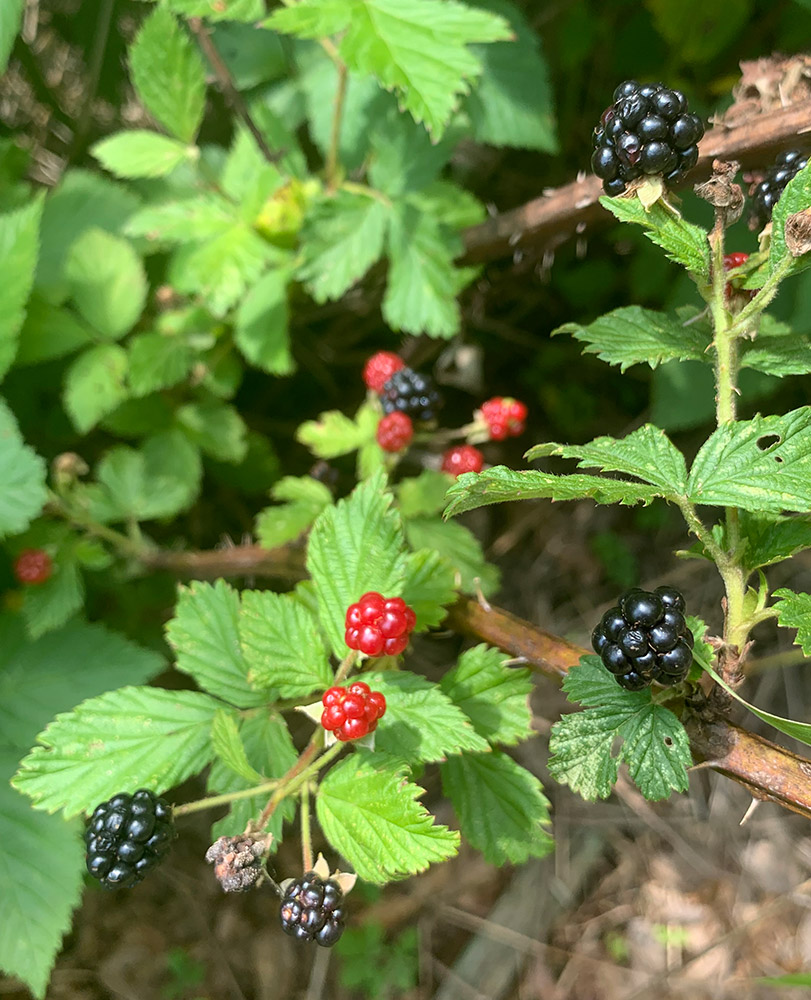This is another one that I need to get more photographs of in different seasons. In general, this plant is great for wildlife. The brambles provide cover for various birds, rabbits and other animals. Deer and rabbits browse on the prickly stems (don’t ask me how) and lots of birds, mammals and humans eat the fruit which is high in Vitamin C, and depending, disperse the seeds.
Listen, I don’t like this plant. It’s good for wildlife, and for eating in the summer if you don’t mind huge seeds in your teeth. But woah, this thorny plant REALLY does a number on your skin. Or your clothes. Or really anything. Personally I find this much worse than briars. I think the thorns are finer, so they stick more, and lodge in (your skin, your clothes) better and stick stick stick to everything! No thank you. I will leave the blackberry to the bears.
Alternate Names: Blackberry. In my opinion also "AARRRGHGHGHH!" Size: Plant 4'-8' tall Family: Rosaceae (Rose family) Habitat: Open woods and thickets at high elevations - full sun. Identifiers: Thorny thicket. Leaves palmately compound, mostly with 5 leaflets. White flowers in late spring are clustered together, and then become black berries in the mid- to late summer. The roots of the plant are perennial, but the top is biennial.














